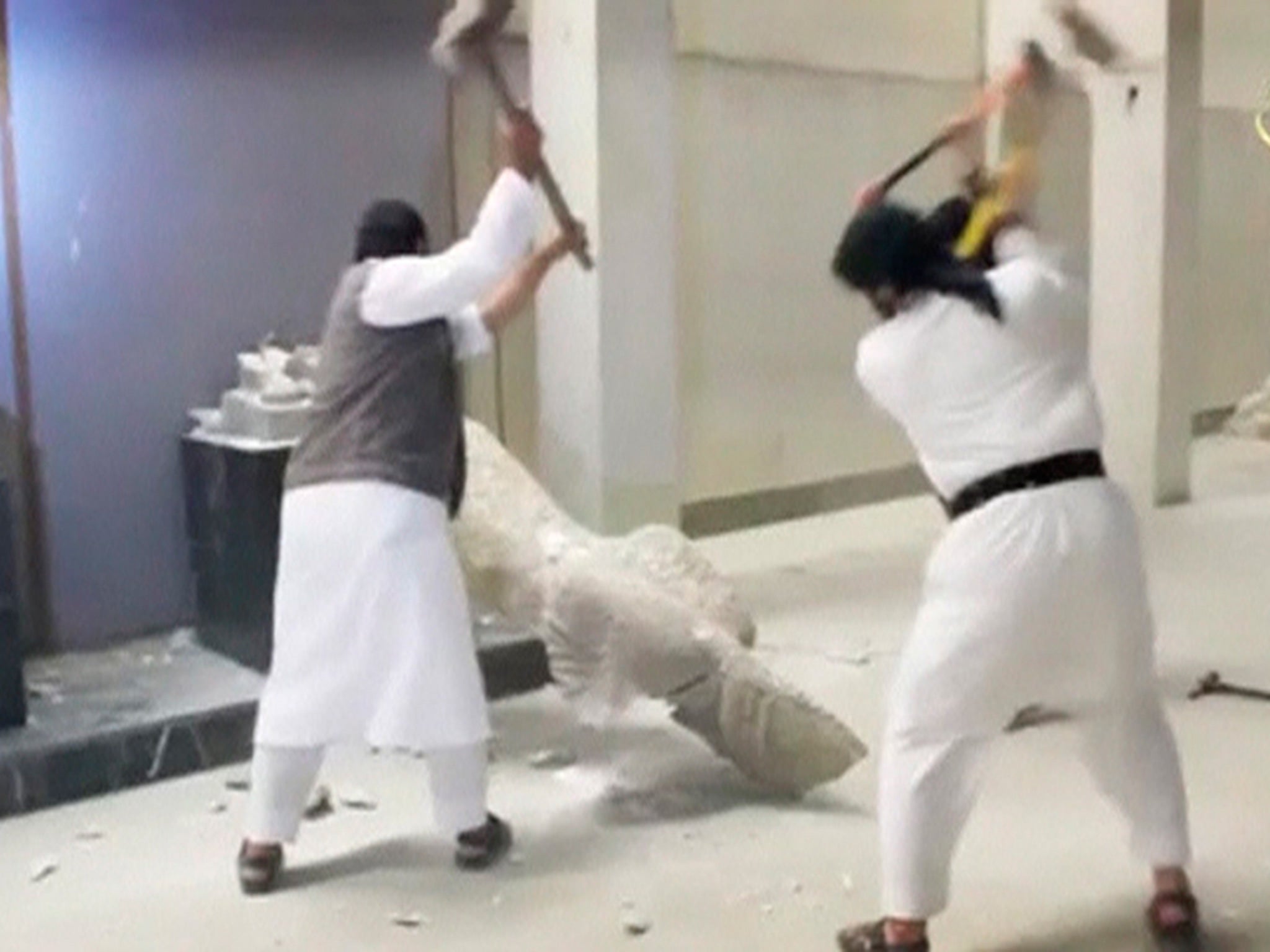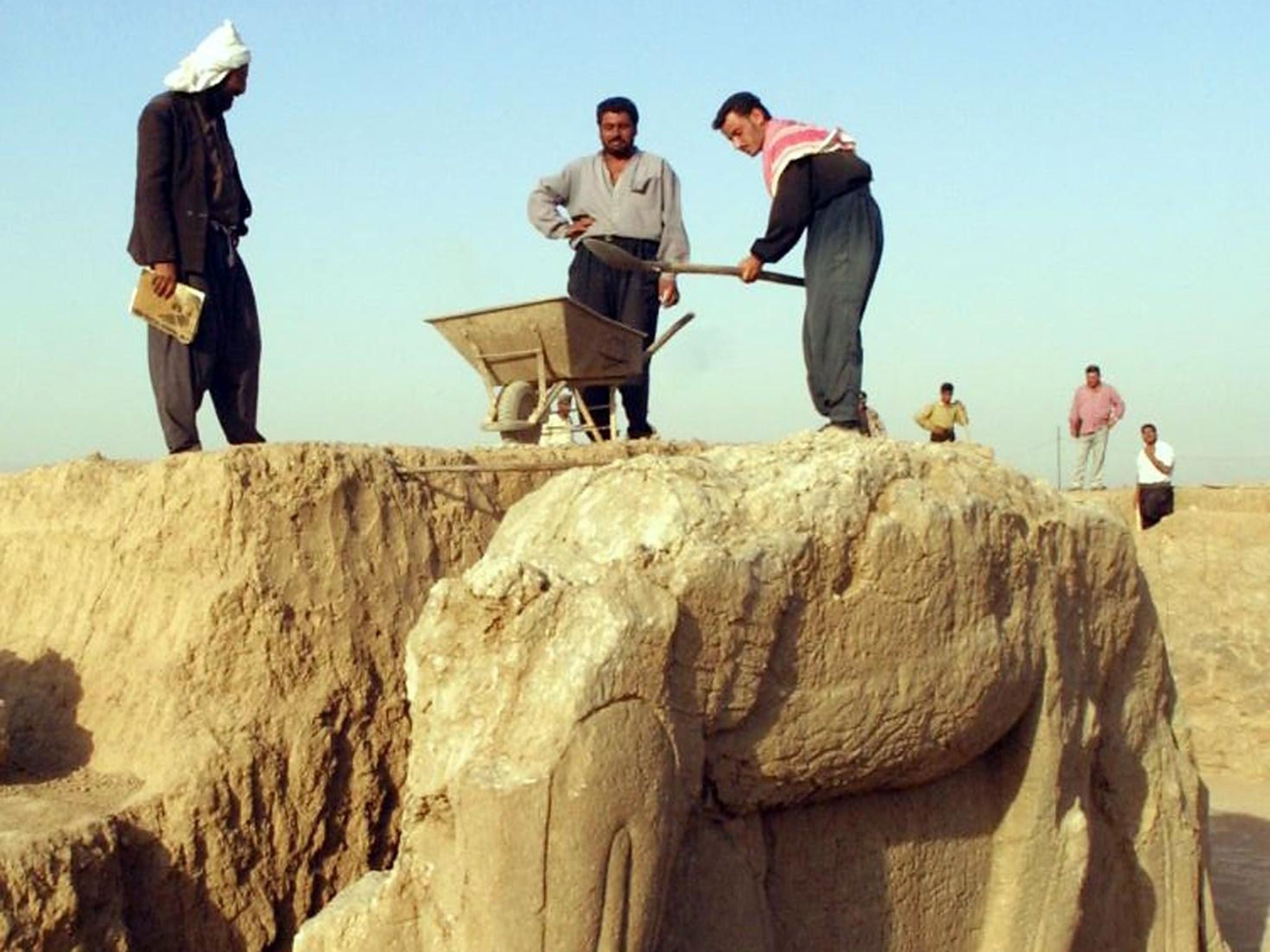Isis has done much worse things than demolish ancient cities – let’s focus on those
Is bulldozing an amphitheatre as bad as murdering someone by throwing them off a building, or decapitating them?

Your support helps us to tell the story
From reproductive rights to climate change to Big Tech, The Independent is on the ground when the story is developing. Whether it's investigating the financials of Elon Musk's pro-Trump PAC or producing our latest documentary, 'The A Word', which shines a light on the American women fighting for reproductive rights, we know how important it is to parse out the facts from the messaging.
At such a critical moment in US history, we need reporters on the ground. Your donation allows us to keep sending journalists to speak to both sides of the story.
The Independent is trusted by Americans across the entire political spectrum. And unlike many other quality news outlets, we choose not to lock Americans out of our reporting and analysis with paywalls. We believe quality journalism should be available to everyone, paid for by those who can afford it.
Your support makes all the difference.You could, of course, take the long view. As we digest newspaper front pages with yet more pictures of buildings from ancient cities in Iraq now threatened with bulldozing, one could compare their fate to English, Gothic churches with their defaced and depopulated facades, to Fountains Abbey, once the largest Cistercian monastery in the country, dismantled in 1539, or ruined Rivaulx, rendered uninhabitable by Henry VIII a year earlier – or indeed to the tiny scraps of alabaster and wood which, bar a few precious examples, are all that is left of pre-Reformation English ecclesiastical rood screens and altarpieces. These things were deliberately destroyed by a ruthless, incoming force wishing to insist on its absolute supremacy over an old regime. History has an ominous circularity.
Equally, we could reflect, somewhat smugly, that thanks to British colonialism and our interest in owning stuff, our institutions are quite well stocked already with publicly accessible Assyrian winged lions and statues from the ancient city of Nimrud, targeted last week by Isis militants. As my son, 10, trundled off on a school trip to the British Museum last Friday I asked him what he was going to see. “Treasures of Islam,” he responded, cheerily. All of which makes our husbandry of the Parthenon Marbles the more defensible, does it not? Am I really suggesting that Athens is the next target for the Isis wrecking ball? Stranger things have happened, and Greece is quite a lot nearer Iraq than Bloomsbury.
Does this mean that we in the West, while wringing our hands over the destruction of World Heritage Sites, which the UN has called “a war crime against heritage” should pat ourselves on the back for looking after precious things an awful lot better than the volatile, violent East? Perhaps. Although, thanks to our desire to see everything, all the time, we tourists in the West have done quite a lot of damage to precious sites, even if pollution via breath condensation (the Sistine Ceiling, Lascaux caves) or footfall (Pompeii, the Pyramids of Giza) might be classed as damage wrought from excessive love, rather than anything else.
Furthermore, is bulldozing an amphitheatre as bad as murdering someone by throwing them off a building, or decapitating them? It is not. Cultural “cleansing” is an abomination for it is an attempt to erase memory and history. But it is not as horrendous, surely, as blindfolding a human being and cutting his head off. Or stoning her. Or any of the other atrocities Isis has brandished before us.
What the vandalism of ancient cities does do is strike at another part of our collective soul, namely the advocacy that certain places are special, because we have been taught about them and because we value art. It is a belief which most of us have signed up to; it strides across travel brochures, it makes people put the Taj Mahal on bucket lists, it carries camera-toting Westerners over Abu Simbel at dawn in hot-air balloons. I am not suggesting that locals do not love and value these ancient buildings, sculptures and artefacts, and take great succour by living alongside them.
However, I suspect this vandalism is being done as a tactic to enrage foreign societies who hold culture and tourism and history dear, societies which foster people who support arts institutions, buy broadsheet newspapers and listen to the likes of Radio 4, where the attacks on Hatra led the bulletins last week. People who will jump up and down and say Something Must Be Done. You can achieve global impact, quite quickly, by targeting these people, because they are the gatekeepers to power and communication.

Perhaps the answer is to turn away completely. To withhold publicity to these doomed cities, their terracotta colonnades and their perfect arches. To console ourselves by remembering that the world has conserved much from these ancient civilisations already, and to focus on halting what surely is a more urgent cause, namely the terror, torture and murder being wreaked on living people.
Short cut to a rise in female confidence
Hoorah! Short hair for women is back, apparently. As an eternal devotee of the crop-headed look (having been brought up in the Seventies, when we all had short hair), I am delighted that the news on the red carpet is to chop those tresses.
Apparently the recent enthusiasm is not only because Miley Cyrus and Rosamund Pike have gone for it, but also because we are all feeling a bit better off, and so can think about going to the salon regularly.
I am always trying to get my daughters to cut their hair. It has been a hopeless cause so far. They (and all their friends) have long embraced the same, tedious, long-hair style. Hair that needs regular brushing, that needs time taken to plait and arrange, hair that gets in the way of sport and dance, that screams out Duchess of Cambridge (passive beauty) rather than Victoria Beckham (enterprising beauty) as the accepted role model. So if short hair indicates an upsurge in female confidence and enterprise, as well as a sprinkling of Seventies sassiness, bring out the scissors.
Join our commenting forum
Join thought-provoking conversations, follow other Independent readers and see their replies
Comments